"Like one of those novice chefs who puts steak, fries and spaghetti bolognese all on the same plate": Is Casio's 'recording studio in a boombox' the most bizarre music-making product of all time?
Synth workstation? Karaoke machine? Recording studio in a ghetto blaster? Answer: all - and none - of the above…
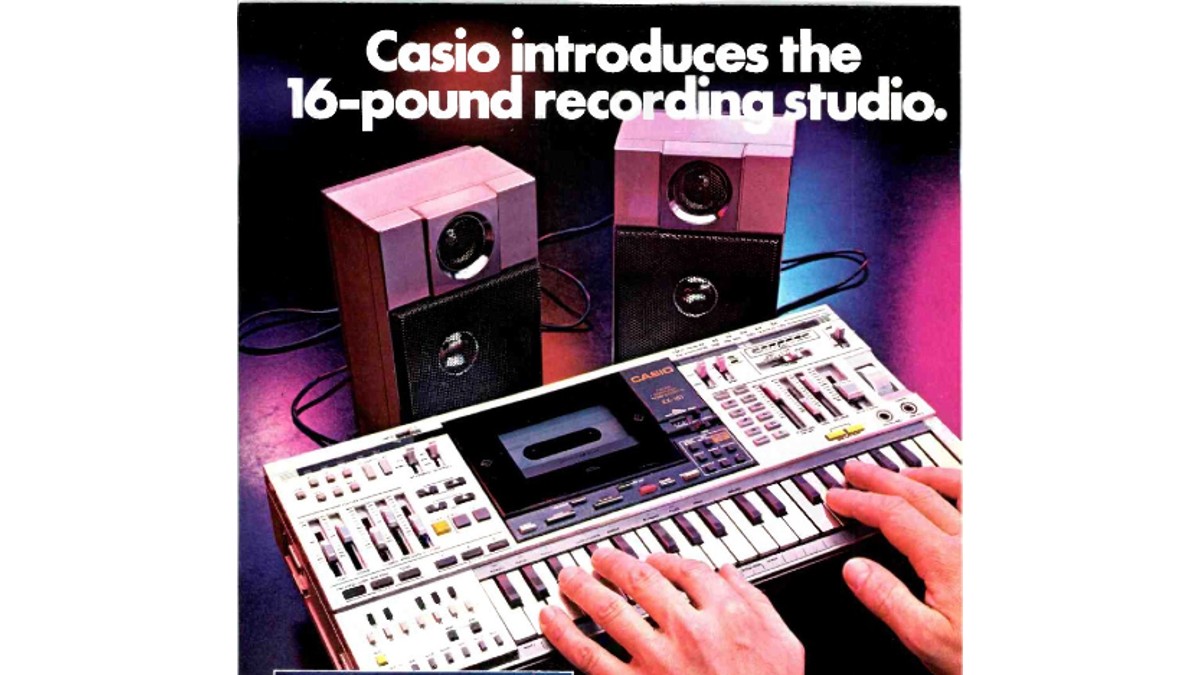
A recording studio in a boombox? What was Casio thinking in 1984 with the bizarre, but strangely attractive, KX-101?
It was advertised as a recording studio for 16 pounds (that being its weight rather than price), and certainly had all the makings of a studio, with a keyboard, drums, speakers and recording.
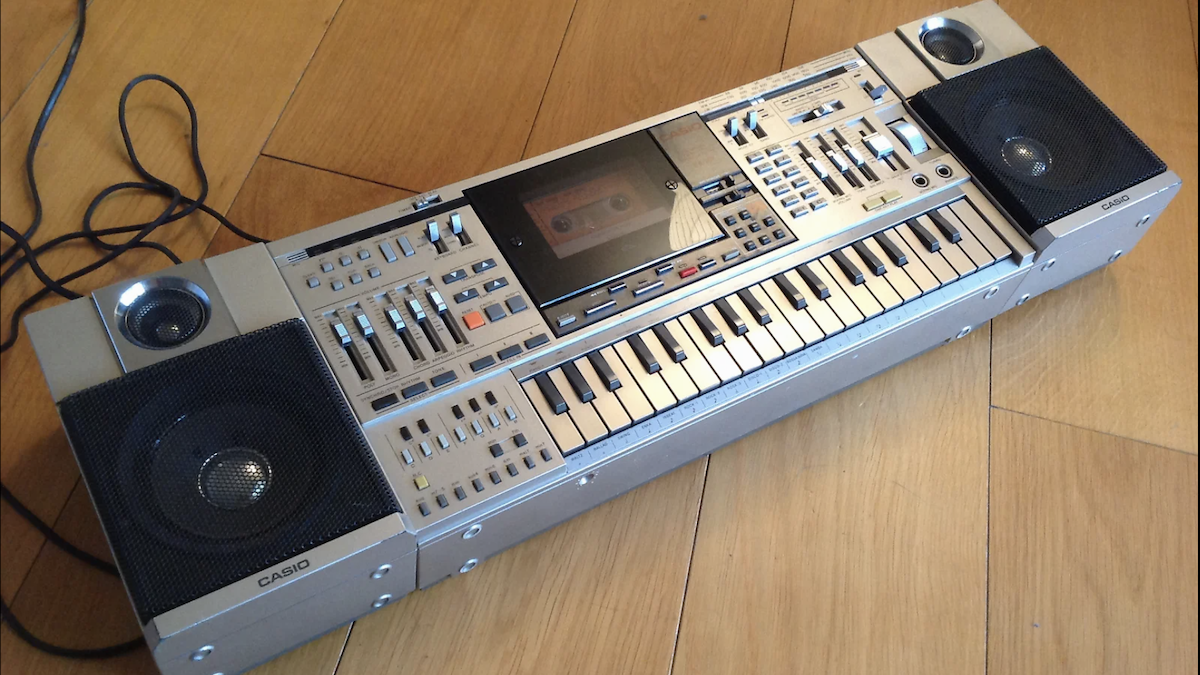
In the 1980s Casio was on a roll with its calculators, digital watches and other gadgets of a more musical nature. These included the VL-1/Tone, allegedly the biggest selling synth of all time, although it was perhaps stretching the very definition of the word 'synthesizer'.
This wasn't a portable stereo just for listening to music, but also for creating it.
The VL-1 was a great little keyboard that was propelled into the limelight by the song Da Da Da by Trio and went on to sell tens of thousands of units. While you could change the sounds, and it had beats and melody programming, it wasn't a 'synthesizer' that we know in the sense of today's modern hardware keyboards.
Still, the VL-1 and its ilk did give Casio the confidence to further explore music production. And with the KX-101, the company was clearly hoping to unite several different markets, but mostly aiming the device as a boombox for the recording musician.
This wasn't just a portable stereo just for listening to music, but also for creating it.
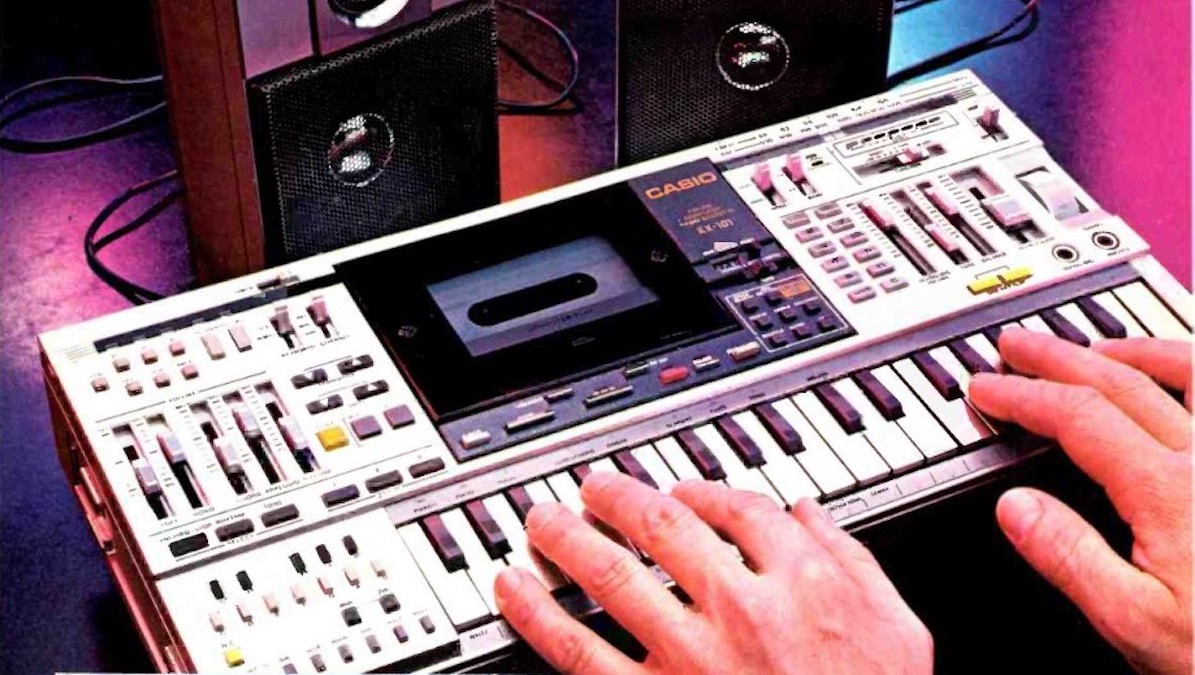
The KX-101 was odd, of that there is no doubt, but it did have some solid credentials for the recording musician. There was an intelligent cassette player/recorder – more on this later - a keyboard with nine sounds and four notes of polyphony, effects, and a big sound courtesy of some detachable 4-inch speakers. Oh, and an AM/FM radio - just what every music producer needs.
Get the MusicRadar Newsletter
Want all the hottest music and gear news, reviews, deals, features and more, direct to your inbox? Sign up here.
With the FM Radio, Casio was ahead of the curve with the KX-101.
But actually, on that last feature, you could argue that Casio was ahead of the curve – Teenage Engineering has famously built such a radio into its OP-1 and OP-1 Field workstations, very much the 21st century equivalents of the KX-101 (you could argue at a stretch).
So what of the keyboard? Well, according to One Two Testing magazine – pretty much the only magazine of the time to bother getting a KX-101 in for review – the keyboard featured nine presets (piano 1-3, harpsichord, organ, clarinet, flute, horn and mello) that were "the usual simple and slightly fizzy sounds". That probably meant they adhered to the low bit-rate style of the sounds in the VL-1.
Included effects were almost as bizarre as the overall concept. A Leslie speaker simulator offered some swirls, while a 'Unison mode' enabled up to four mono voices to be played at one time.
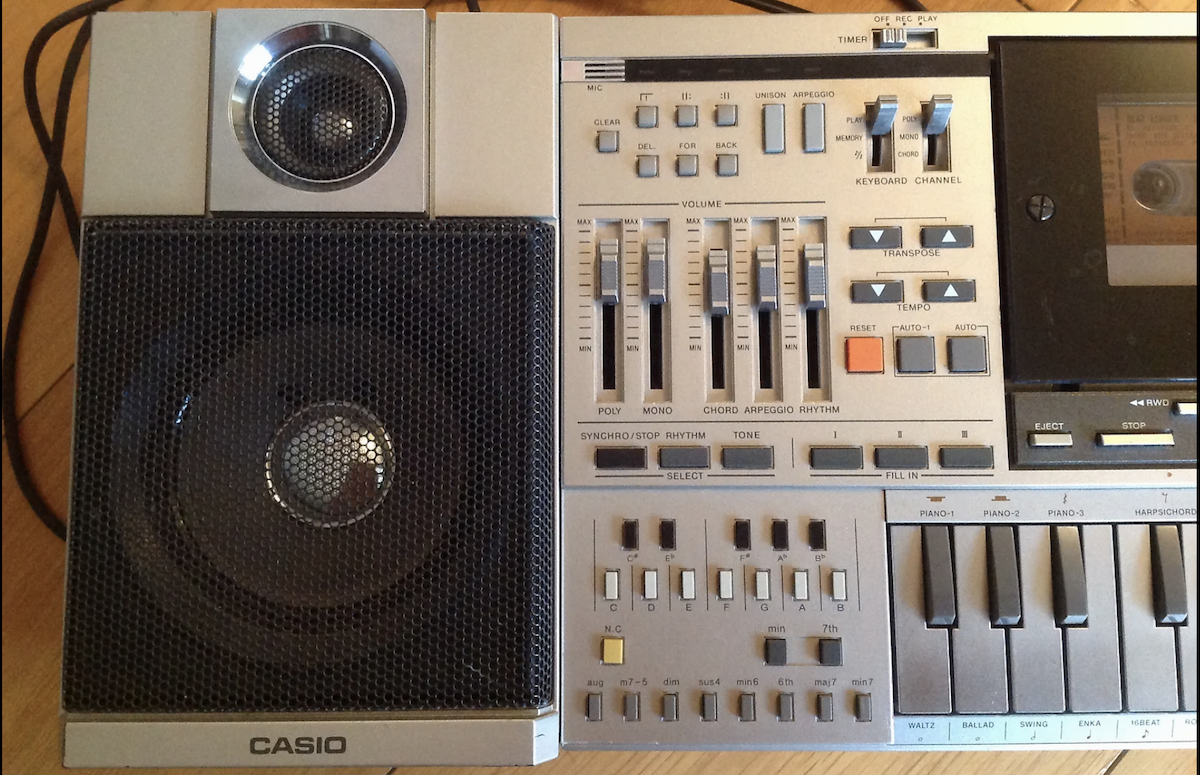
And things get a little more off-road with the keyboard itself. Or should we say 'keyboards', as the KX-101 actually had two; a second, to the left of the main 'board, was used for chords and beats.
The recording area of the KX-101 featured "a semi-intelligent cassette player". Was this a 1984 version of AI, we wonder?
According to One Two Testing this was "a one key play system to let you load the notes then add the timing, plus 12 standard, 'family type' drum rhythms and three fills".
The magazine then added that this was "nothing out of the ordinary". If you, like us, are thinking that this is "everything out of the ordinary", you have to remember that this was a time when all keyboards with speakers were fitted with auto accompaniment beats and chords, so this is what this section was all about.
You could also conduct rudimentary sequencing here, as the review explains. "You can first input the notes of the melody line, then go back and complete the timing by pressing keys marked with crotchets, quavers, rests or whatever". The number of note events (473) could even be expanded by way of extra memory.
And there was even the ability to sing over your melodies by plugging in an optional mic around the back, which leads nicely to the recording area of the KX-101, which featured "a semi-intelligent cassette player". Was this a 1984 version of AI, we wonder?
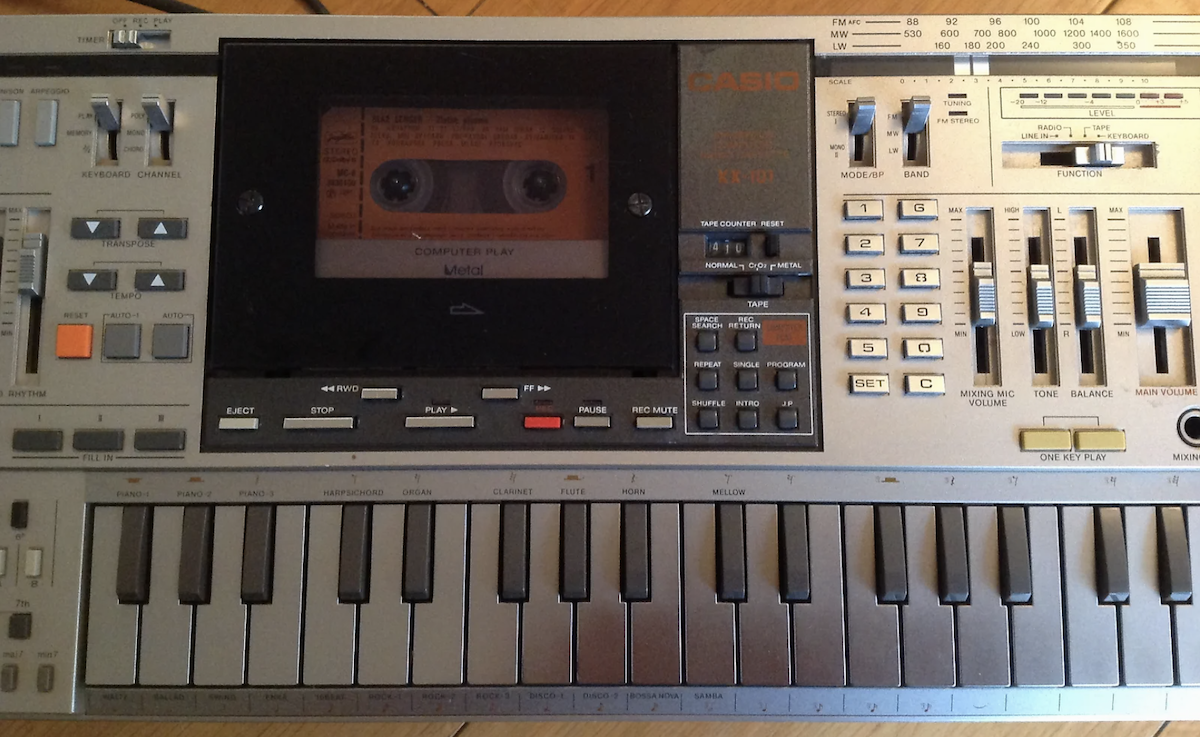
While not, of course, Artificial Intelligence, the cassette did employ a technique we've not heard of before whereby you could program which tracks it would play, repeat tracks or play them in a random order.
You can use the machine as a digital dump from the keyboard section. But you can't play along with a tape or a broadcast. A pity.
One Two Testing
"Don't expect it to perform these miracles on all commercially available cassettes, however," One Two Testing noted, "as the Casio needs four second gaps between each recording to find its way around."
Aside from playback, the recording side of the cassette did seem pretty limited. "You can record direct from the Casio radio, and use the machine as a digital dump from the keyboard section. But you can't play along with a tape or a broadcast. A pity."
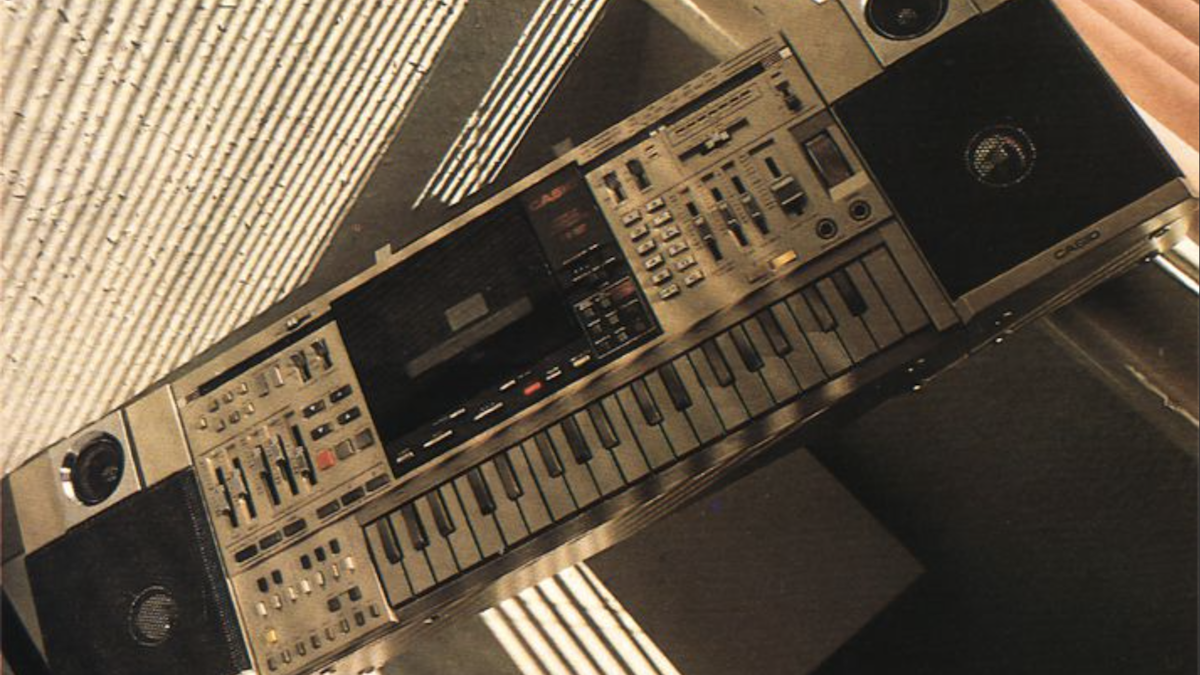
One Two Testing was pretty blunt with its review conclusion, stating, "if you haven't got any of the individual elements, you'd be doing well. If you have, then you're buying redundancy. Pricey, too." The latter point being fair enough, as £349 was a lot of cash back then.
if you haven't got and of the individual elements, you'd be doing well. If you have, then you're buying redundancy. Pricey, too.
One Two Testing
Ultimately, the KX-101 was a failure for Casio, probably because it quite clearly tried to master too many things; a bit like one of those novice cooks on Masterchef who puts steak, fries and spaghetti bolognese all on the same plate.
It was wedging together at least two concepts of the time into one product and calling it 'a recording studio', when really it was a home keyboard that was able to record. Or an early karaoke machine with keyboard features. Or even an early synth workstation with basic sequencing.
Or maybe we should just stop trying to give it credit where none was due, as it was really a white elephant that no-one bought. But that all said, look at what you might get for it now if you had bought in back then…
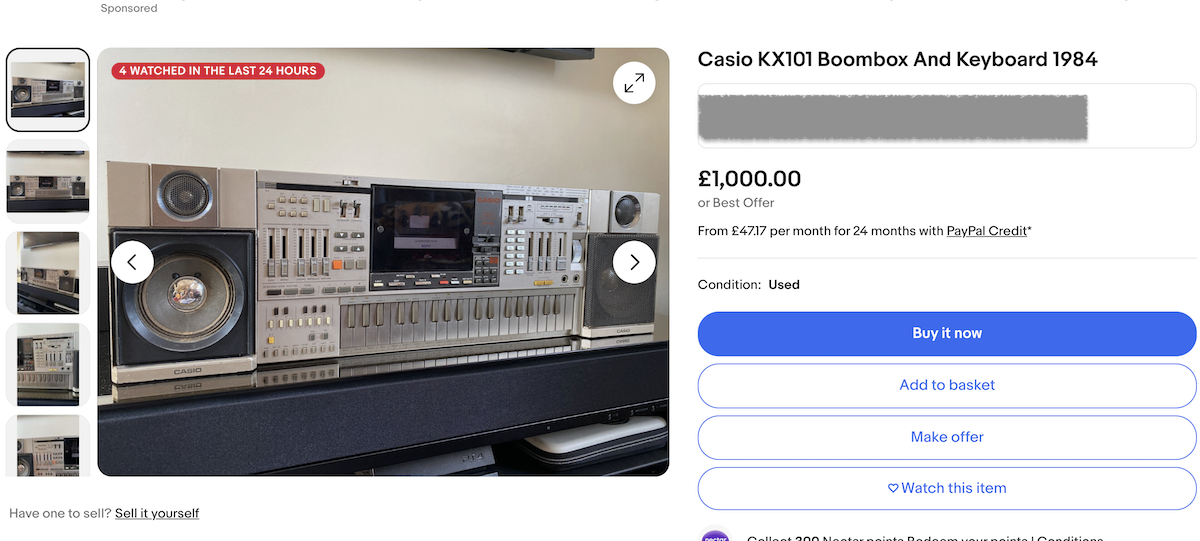


Andy has been writing about music production and technology for 30 years having started out on Music Technology magazine back in 1992. He has edited the magazines Future Music, Keyboard Review, MusicTech and Computer Music, which he helped launch back in 1998. He owns way too many synthesizers.
With the same mesh-head playability and powerful new Strata module as its bigger brothers, Alesis Strata Club brings a new compact form to its best-selling range
MusicRadar deals of the week: Enjoy a mind-blowing $600 off a full-fat Gibson Les Paul, £500 off Kirk Hammett's Epiphone Greeny, and so much more


![PRS Archon Classic and Mark Tremonti MT 15 v2: the newly redesigned tube amps offer a host of new features and tones, with the Alter Bridge guitarist's new lunchbox head [right] featuring the Overdrive channel from his MT 100 head, and there's a half-power switch, too.](https://cdn.mos.cms.futurecdn.net/FD37q5pRLCQDhCpT8y94Zi.jpg)







